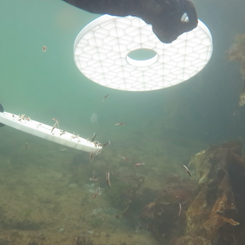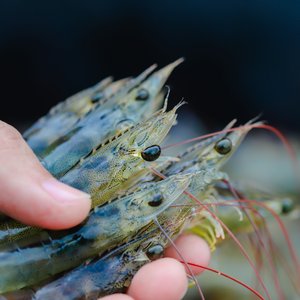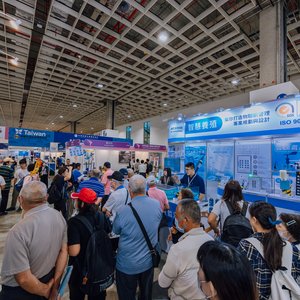Researchers Arjan Palstra, Chantal Roozeboom, John Bastiaansen and PhD candidates Xiaofei Yu, Farid Aththar, Priadi Setyawan, Pauline Jehannet from the Aquabreeding Group of Animal Breeding and Genomics from Wageningen University presented their research on selective breeding with genomics tools, interaction of genes with the environment, swimming physiology and eel reproduction during the Europe Aquaculture Society (EAS) congress, held from October 4-7, 2021, in Madeira.
Selective breeding in tilapia
Priadi Setyawan presented his results about the potential for the combined production of salinity tolerant tilapia and shrimp in brackishwater pond culture in Indonesia. Small scale farmers dominate brackishwater farming and the majority of them apply shrimp and tilapia farming in polyculture, with or without rotation during the rainy and dry season. Setyawan showed that such systems can be economically profitable to farmers but to successfully produce tilapia in brackishwater, a tilapia strain with good growth over a range of fluctuating salinities is needed.
A breeding program for salinity-tolerant tilapia based on selection for own performance of harvest weight has been conducted by the Research Institute of Fish breeding (RIFB) in Indonesia for 4 generations. Xiaofei Yu presented a detailed whole-genome analysis on the origins of Sukamandi strain which was used as the base population for the breeding program. The Sukamandi strain represents an interesting, inter-species fish hybrid produced for aquaculture, but with very asymmetrical contributions from its parent populations, the Nile tilapia and the blue tilapia. Breeding four generations under a high salinity environment resulted in a strong selection of salinity-adaptive regulatory pathways.
The reproductive performance of tilapia in brackishwater is also considered important. Farid Aththar presented his results about the reproductive performance and the genetic parameters of the Sukamandi strain in brackishwater and freshwater. All reproductive traits showed higher values in brackishwater compared to freshwater. To reduce the potential threat of tilapia invading the brackishwater ecosystem, selection for reduced maturation in brackishwater environment is urgently needed, researchers said.
Selective breeding in rainbow trout
Chantal Roozeboom simulated a rainbow trout breeding program and investigated whether genomic selection would result in better performance. Using genomic selection, the rate of inbreeding was reduced and, therefore, a higher selection intensity could be applied in order to increase the genetic gain. Genotyping costs could be reduced by genotyping fish with lower density SNP panels or genotyping only half of the selected candidates.
Seabream breeding for the east and west Mediterranean
Seabream is a major aquaculture species produced all around the Mediterranean. John Bastiaansen showed that seabream from different families were ranking differently for harvest weight, fillet weight and growth rate when raised in either the eastern and western Mediterranean.
Due to this genotype by environment interaction, breeding programs for these environments need to be optimized or separate breeding programs may be needed for each environment. Producers will benefit if they stock their farms with fish from breeding programs that target their environment. The main difference between the test sites was the water temperature, indicating that future temperature changes will need to be considered in breeding programs of seabream.
Eel reproduction
The production cycle of the European eel is still not closed. At the Eel Reproduction Innovation Center (EELRIC) of Wageningen University & Research, researchers can produce eel larvae three times per week but egg and larval quality are not yet optimal. This is partly due to the crudeness of injecting carp hormones, a hormone mixture that might vary between batches and is not eel-specific.
Pauline Jehannet presented results showing that larvae were produced for the first time with newly developed recombinant gonadotropins that are eel-specific. The protocol needs further improvements but could potentially improve egg equality and lead to the production of more robust larvae.
Swimming physiology
Arjan Palstra presented results from the EU Medaid project showing that an optimal flow regime, stimulating seabream to swim, enhanced growth (with 15%) and uniformity of growth (25% less variation), and lowered stress levels. Following these fish for six weeks with accelerometer sensors in a sea cage revealed the activity patterns over the day and over the weeks which can be extremely useful for timing feeding events at the start of active periods.













